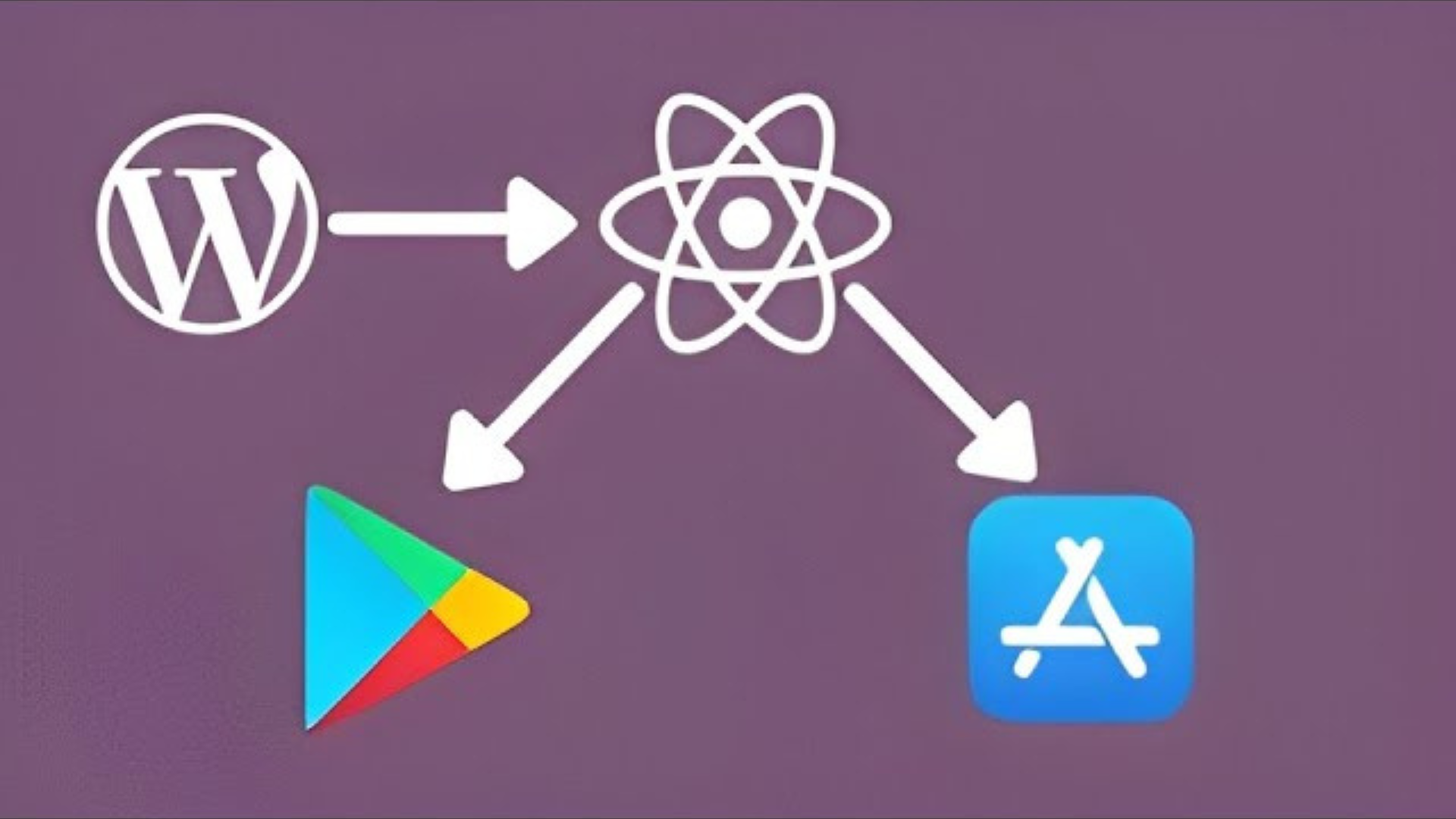Introduction: Why Build a Mobile App for Your WordPress Website?
The future of web and mobile development is increasingly intertwined. Websites, once the primary source of digital interaction, are now competing with mobile apps, which are more accessible and user-friendly. Imagine having the power to turn your WordPress website into a mobile app. Sounds incredible, right? Well, that’s exactly what we’re going to cover in this step-by-step guide.
This isn’t just about adding another layer to your business strategy—it’s about engaging with your audience on their favorite devices, boosting user experience, and driving your brand further into the mobile age. If you’ve been relying solely on your WordPress site, you’re missing out on the chance to enhance your business, attract new customers, and retain them through a well-built mobile app.
What is React Native and Why is It Ideal for WordPress Mobile Apps?
React Native is a JavaScript framework that allows you to build mobile apps for both iOS and Android using the same codebase. It’s become a game-changer, especially for web developers who want to dive into mobile development without learning multiple languages like Swift or Kotlin.
Benefits of Using React Native for WordPress
- Cross-Platform Development: You write your code once, and it runs on both iOS and Android.
- Speed and Efficiency: Save time and resources by leveraging a single codebase for two platforms.
- JavaScript-Based: As WordPress developers, you’re already familiar with JavaScript, so React Native provides a smooth transition.
- Strong Community Support: React Native boasts an active and large developer community, offering solutions and resources when you hit a roadblock.
Setting Up the Development Environment
Before we dive into coding, let’s ensure you’ve got all the necessary tools in place.
Prerequisites
- Basic JavaScript (preferably ES6) knowledge
- Familiarity with React concepts (don’t worry, we’ll touch on these too!)
- A WordPress website
- A laptop with an internet connection
Installing Expo and React Native
Expo is a framework that simplifies the process of building and testing your React Native apps. It allows you to run your app instantly on your mobile device without complex setups. To get started:
- Install Node.js.
- Install Expo CLI by running
npm install -g expo-cli. - Create a new Expo project:
expo init my-wordpress-app.
Understanding WordPress REST API
WordPress’s REST API opens the doors to a world of customization for your website’s data. But why use it?
Why Use WordPress REST API?
The REST API allows your React Native app to communicate directly with your WordPress website, pulling in content like posts, pages, images, and more. It’s like giving your app access to the heart of your WordPress site.
Key Endpoints to Use
/wp-json/wp/v2/posts: Fetch blog posts/wp-json/wp/v2/pages: Retrieve WordPress pages/wp-json/wp/v2/media: Access your media library
Creating the React Native Project
Now that we have our tools in place, let’s create our React Native app. This is where the fun begins!
Initializing Your Expo Project
Use Expo to initialize your project, which will serve as the foundation for your mobile app. After creating your Expo project, your app will have a basic template ready to be expanded.
Setting Up Folder Structure
Organize your project files logically to ensure easy maintenance. Set up folders for components, screens, and services, keeping everything neat and manageable.
Connecting React Native to Your WordPress Website
This is where the magic happens—connecting your React Native app to your WordPress website.
Fetching Data from WordPress Using REST API
Use the fetch method in JavaScript to call WordPress’s REST API and retrieve the desired data. For example:
jsCopy codefetch('https://yourwebsite.com/wp-json/wp/v2/posts')
.then(response => response.json())
.then(data => console.log(data));
Handling API Requests and Data Display
Once the data is fetched, use React’s state management (like useState) to display it within your app. Whether it’s posts or images, React Native makes it easy to showcase your WordPress content on a mobile platform.
React Navigation: Building a User-Friendly Interface
Navigation plays a key role in your app’s usability. React Navigation allows you to create intuitive menus and tabs.
Tabs and Drawer Navigation
React Navigation gives you flexibility. Whether you want to add bottom tabs for easy switching between pages or a drawer menu for more complex navigation, React Navigation’s got you covered.
Navigating Between Pages
Using navigation methods like navigate() and goBack(), you can transition between screens smoothly. Your users will appreciate the seamless experience.
Adding a Custom Component in React Native
Custom components allow you to build reusable sections of your app. For example, you can create a custom header that appears on every screen or a reusable button styled exactly how you like it.
Using Hooks: State, Effect, and Context
React hooks make your app dynamic and responsive to user interactions.
Understanding useState and useEffect
The useState hook lets you manage state in your functional components, while useEffect handles side effects like fetching data or updating the DOM.
Leveraging useContext for Global State Management
With useContext, you can share state across different components, making your app’s data flow smoother and more organized.
Styling Your Mobile App
Mobile app styling is crucial to ensure your app looks good on different devices.
Using StyleSheets for Component Styling
In React Native, you can style your app using the StyleSheet API. This enables you to define styles for each component in a structured way.
Responsive Design for Different Devices
Your app needs to adapt to different screen sizes. Use React Native’s Flexbox system and media queries to make your app look great on both small and large screens.
Dark Mode and User Preferences
With dark mode becoming increasingly popular, your app should allow users to toggle between light and dark themes.
Implementing Dark Mode Based on User Settings
React Native allows you to check the user’s device settings and apply dark mode accordingly.
Storing Preferences Using AsyncStorage
Use AsyncStorage to store user preferences like dark mode or language settings. This ensures that the app remembers these preferences even after the user closes it.
Debugging and Error Handling in React Native
No app is complete without testing and debugging. React Native has built-in tools to help you catch errors before they reach your users.
Common Errors and Fixes
Some common issues you may face include API call failures or incorrect component rendering. Tools like React Developer Tools and Chrome Debugger make troubleshooting easier.
Publishing Your Mobile App
Once your app is ready, it’s time to share it with the world.
Deploying to Expo
With Expo, deploying your app for testing is a breeze. You can also invite users to test your app before final submission.
Submitting to App Store and Play Store
When everything is polished, submit your app to the App Store and Google Play Store. Be sure to follow their guidelines closely to avoid any hiccups during the review process.
Social Proof: How Developers Are Already Benefiting from React Native Mobile Apps
Many developers have transformed their WordPress websites into fully functional mobile apps using React Native. Here are a few success stories that showcase the power of React Native in real-world applications.
Scarcity and Urgency: Start Your Mobile App Journey Today
The mobile app industry is growing at an unprecedented rate. If you’ve been considering building a mobile app for your WordPress website, now is the time to take action. Don’t miss out on the opportunity to provide your users with a top-notch mobile experience!
Start building your WordPress mobile app today and expand your digital presence with React Native!
HOMEPAGE: https://www.udemy.com/course/create-react-native-mobile-app-for-wordpress-website/








